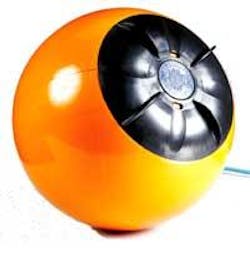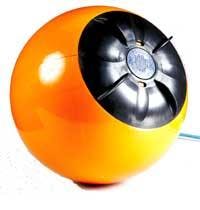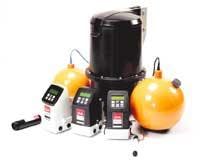Company Offers Filter-Free On-line Nitrate Meter
A new UV-based nitrate meter uses an antibacterial ion membrane to separate the bacteria-infected water in a wastewater tank from the pure de-ionized water in the meter, providing a more accurate and stable nitrate measurement system that requires only 15 minutes of maintenance every three months.
Like all other nitrate meters, the new Insitu 5100 from Danfoss measures nitrate levels by determining the degree to which UV light is dampened when transmitted through nitrate-bearing water and wastewater. However, all previous nitrate meter designs have had to account for the fact that other substances besides nitrates can dampen UV light, especially when measurements are taken in water that contains sludge in the process tank.
To increase measurement accuracy, earlier meter designs used various types of filters to minimize the presence of these substances. Unfortunately, the filters themselves caused problems that included slow response times and significant measurement inaccuracies — a result of live bacteria that reside in the filters themselves.
Unlike previous generations of nitrate meters, the Insitu 5100 does not use filters. No water passes into the meter itself. Instead, it contains an ion membrane technology to separate out the bacteria-infected water in the process tank. Only ions can penetrate the membrane, assuring that alterations in the sludge concentration, or the presence of other substances in the wastewater, do not affect measurement accuracy.
Mode of Operation
A small pump inside the Insitu 5100 pumps de-ionized water past the back surface of the ion membrane, where the de-ionized water absorbs ions from the wastewater and achieves the same nitrate concentration as that of the wastewater. The water then passes the system's flashing Xenon UV lamp so that the degree of light dampening can be measured and the nitrate concentration established. One result of this design is that the light source's power can be reduced, as the meter contains only clean water. This feature extends the service life of the UV lamp in comparison with conventional meters, which must transmit UV light directly through the wastewater.
The new meter's ion membrane must be replaced a maximum of every three months, at the same time the meter is filled with de-ionized water.
The Insitu 5100 uses Danfoss' "orange ball" flotation design — originally introduced as a component of the Evita® Oxy dissolved oxygen meter — and has the same self-cleaning features. The design ensures that the nitrate ions can enter the meter unhindered and without manual cleaning — even if the meter is installed directly in the process tank.
Background
Danfoss introduced the Evita® Insitu 4100 meter — the first online nutrient meter that could be positioned anywhere in the process line — less than three years ago. The Insitu 4100 operates without filtration or any other test preparation equipment and displays concentrations of ammonium, nitrates or phosphates within minutes. The meters provided wastewater treatment plants with new opportunities to optimize their nitrification/de-nitrification processes and make appreciable savings while improving their outflow values.
Danfoss set new standards for ease of maintenance with the Evita Insitu meters, and quickly rose to the position of the third largest supplier of nutrient meters in the world. The Insitu 5100 is the newest addition to the product line.
For more information regarding the new Evita Insitu 5100 nutrient meter, contact Danfoss, Inc., Water & Wastewater Division, 8800 W. Bradley Road, Milwaukee, WI 53224; Tel: (414) 355-8800; Web: www.us.water.danfoss.com.


